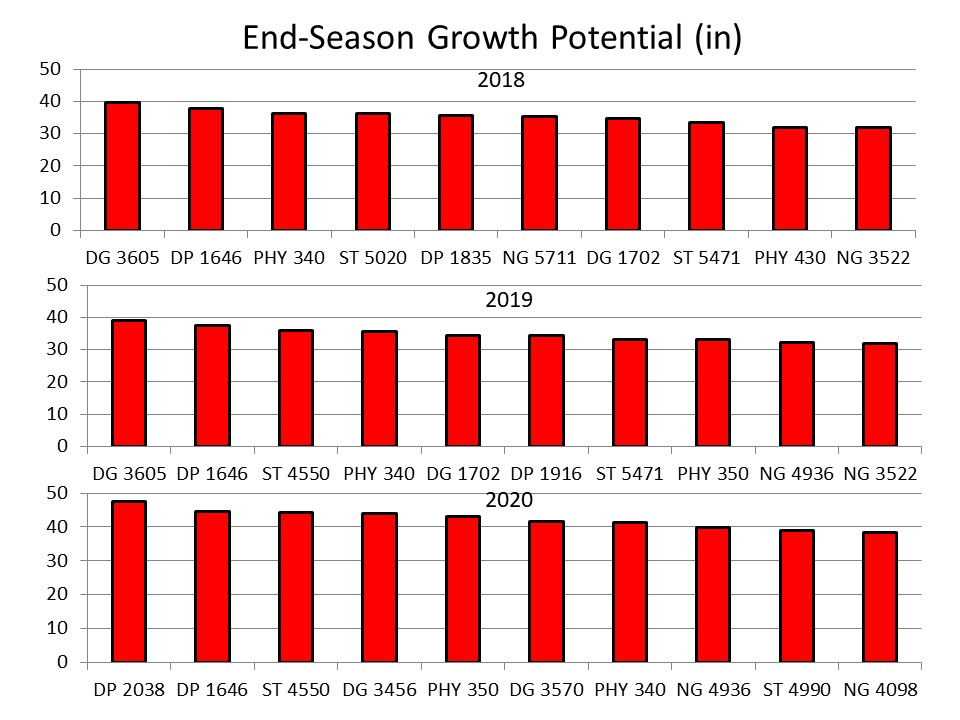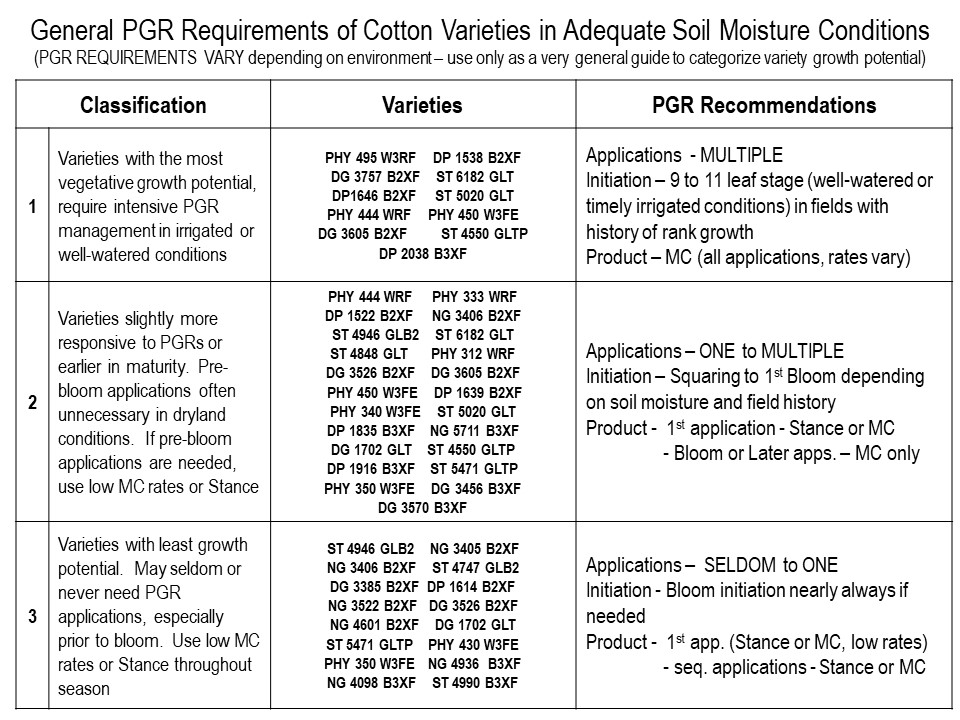PGR Management Considerations and Current Weather (Collins & Edmisten)
go.ncsu.edu/readext?807939
en Español / em Português
El inglés es el idioma de control de esta página. En la medida en que haya algún conflicto entre la traducción al inglés y la traducción, el inglés prevalece.
Al hacer clic en el enlace de traducción se activa un servicio de traducción gratuito para convertir la página al español. Al igual que con cualquier traducción por Internet, la conversión no es sensible al contexto y puede que no traduzca el texto en su significado original. NC State Extension no garantiza la exactitud del texto traducido. Por favor, tenga en cuenta que algunas aplicaciones y/o servicios pueden no funcionar como se espera cuando se traducen.
Português
Inglês é o idioma de controle desta página. Na medida que haja algum conflito entre o texto original em Inglês e a tradução, o Inglês prevalece.
Ao clicar no link de tradução, um serviço gratuito de tradução será ativado para converter a página para o Português. Como em qualquer tradução pela internet, a conversão não é sensivel ao contexto e pode não ocorrer a tradução para o significado orginal. O serviço de Extensão da Carolina do Norte (NC State Extension) não garante a exatidão do texto traduzido. Por favor, observe que algumas funções ou serviços podem não funcionar como esperado após a tradução.
English
English is the controlling language of this page. To the extent there is any conflict between the English text and the translation, English controls.
Clicking on the translation link activates a free translation service to convert the page to Spanish. As with any Internet translation, the conversion is not context-sensitive and may not translate the text to its original meaning. NC State Extension does not guarantee the accuracy of the translated text. Please note that some applications and/or services may not function as expected when translated.
Collapse ▲Tropical Storm Elsa brought us a needed slow, soaking rain that will likely benefit most growers across North Carolina. Although there were few comments from growers leading up to Elsa’s arrival, we were in the early stages of noticeable drought stress in many areas of the Coastal Plain as of July 7, 2021, even in those areas that received rain within the last week. It’s important to keep in mind that regardless of rainfall amounts or intensity, we are never more than a week or so away from a significant drought. This scenario is more common on sandier soils, especially when daily high temperatures exceed 90 degrees.
With that said, most growers are in good shape at the moment with soil moisture, and hopefully flooding or wind damage was minimal. There have been several more reports of cotton beginning to bloom since the early reports that came in around July 1, and several more fields that are about to enter the blooming period soon. Cotton growth has surged noticeably after the last 10 days or so, and now that most fields have been top-dressed, so we can expect a significant surge in growth within the next week to 10 days as a result of the moisture that Elsa brought us. Questions about PGR management are likely to come flooding in over the weekend, so we hope to address some of them in this article. The PGRs we refer to here are mepiquat chloride-based PGRs.
We’ve written several articles over the past few years about PGR management strategies, and considerations growers must take into account when making these decisions. This article is not intended to be an all-inclusive list of everything one must consider, but rather a supplemental article with some items more applicable to our current scenario. Below are a few items that would be wise to consider, along with the information provided in our previous articles (Pre-Bloom PGR Decisions, PGR Decisions for 2019).
Understand your ultimate goal. Keep in mind that the most consistent responses to mepiquat chloride-containing PGRs are reduced plant height and earlier maturity. The earliness achieved with PGRs is only valuable if you capture that earliness with your picker. The most critical scenarios to capture the earliness afforded by PGRs is when applications to your earlier cotton get your pickers in the field earlier in the fall or with late cotton that may be at risk of running out of time and heat.
Understand a variety’s propensity for growth. It is important to know how a variety is likely to grow, or its tendency to grow tall. The potential to reduce plant height with PGRs can be more useful with later maturing varieties tend to be more growthy, whereas earlier maturing varieties tend to be more short-statured. Aggressive PGR treatment applied to a short-statured variety could result in a premature cutout, thereby limiting yields. Likewise, varieties with a tendency to grow taller may require slightly more aggressive PGR management. The charts below will allow you to visualize how varieties’ growth potential compare to one another, and how a variety might need to be treated with PGRs under conditions with constant soil moisture. This is a very general guide, and some varieties may appear in multiple categories. Decisions to treat with a PGR should include much more information than variety growth potential alone.

Consider the planting date. Planting date should also play a role in PGR decisions. As mentioned in previous articles, TIMELINESS is the best strategy for later planted (or later emerged) cotton, when a PGR application is justified. Applications made after early bloom have little effect on final plant height and earliness. Additionally, positive yield responses to PGRs are more commonly observed in later planted cotton, when timely rains occur throughout the summer and drought stress is minimal, especially on cotton that is to be harvested first. Negative yield responses are generally more associated with early planted cotton, especially when drought stress occurs and/or when applications are made prior to first bloom, resulting in a premature cutout and insufficient stalk height and fruiting nodes. Keep in mind that a problematic drought is never far away at any given time. Planting date should also influence the targeted end-of-season plant height. Cotton planted in early May for example generally has time/heat in the fall to develop harvestable bolls on upper nodes, and can tolerate (or even benefit from) plant heights as tall as 45 to 50 inches, but heights that exceed this range may result in penalties of some sort. We don’t want to wait until that height range is reached before making a PGR application, especially when the number of nodes above white bloom (NAWB) is greater than 5. Rather, we want to anticipate our targeted end-of-season plant height and make timely applications, if needed, that would slow terminal growth to allow the developing boll load to further restrain terminal growth to completely cease growing within that target height range. Cotton planted in late May or early June could benefit from stalk heights of 35 to 40 inches tall, but no more than that, as management for earliness is more of a concern in later planted cotton.
Weather forecasts and field history: Always watch the weather forecasts and consider field history and the current growth stage. We’ll say it again….we’re never more than a few days away from a yield-limiting drought, regardless of the current soil moisture status or rainfall amounts, especially in sandier soils or when temperatures consistently exceed 90 degrees. Even short-lived drought (that reaches the point of wilting) can regulate growth much more so than any PGR application can, and can also reduce yields. We don’t want to make a PGR application with high temperatures and no rain in sight within the forecast. We all know that forecasts change like the wind, so frequent observation is necessary. Cotton growth will likely accelerate over the next week as a result of these recent rains, and the probability of needing a PGR application is high, especially for taller cotton that has recently begun to bloom, or will be soon. But it is important to consider all factors before making the decision to spray, one of which is the forecast. Whether we mean to or not, the underlying assumption when applying PGRs is that current growth is rapid and WILL LIKELY CONTINUE TO BE, and a PGR is necessary to restrain growth in order to achieve the targeted end-of-season plant height. However, if the rain faucet turns off and drought ensues, we may regret making an application, therefore make sure there is a high likelihood of additional rain within 10 days or less before making an application. Field history should also play a role in these decisions, as should growth stage. For example, it is highly unlikely that a PGR application will reduce yields when made beyond the first week of bloom. Likewise, it is highly unlikely that a PGR application will improve yields beyond the 3rd week of bloom. In a perfect world, every field that necessitates a PGR application would be treated during the first week of bloom, but we don’t live in a perfect world. Pre-bloom applications can be more likely to reduce yields as explained above, but may be necessary in order to stay on a timely management schedule. Therefore, pre-bloom applications should be made using low/moderate rates as close to first bloom as possible (no less than 9-10 true leaves) and should be reserved for fields with a long history/tendency of excessive growth, later/taller-statured varieties, cotton to be harvested first, and/or later planted cotton.
Look for current or previous signs of stress. Stress of any kind can result in slowed growth. In our current situation, we have several fields that have both short cotton that emerged later, or was water-logged early in its life, and taller cotton that is growing normally or aggressively. If one type predominates the field by a large percentage, it is generally best to manage the entire field according to that type. In several cases this year, cotton that was water-logged early on, for example, is noticeably shorter and slower growing than the taller areas. Spot sprays targeting the taller areas of the field are ideal in these scenarios. When shorter and taller cotton is comingled in relatively equal proportions throughout all areas of the field, or when tankmixing a plant bug spray with your PGR, it’s usually best to apply PGRs using a moderate approach that could benefit the entire crop, versus only targeting the taller cotton for example. This may including delaying PGR applications until first bloom for the entire field (unless tankmixed plant bug sprays are necessary), utilizing a much lower rate of PGRs on the entire field, or some combination of both.
Most growers probably won’t be able to get into the field until late this weekend, which will give us time to monitor each field and assess its PGR needs independently. Hopefully, future weather will continue to favor good growth and boll load development. In the meantime, plant bug sprays are heating up in areas, so thorough and frequent scouting are necessary, as is TIMELY management.


